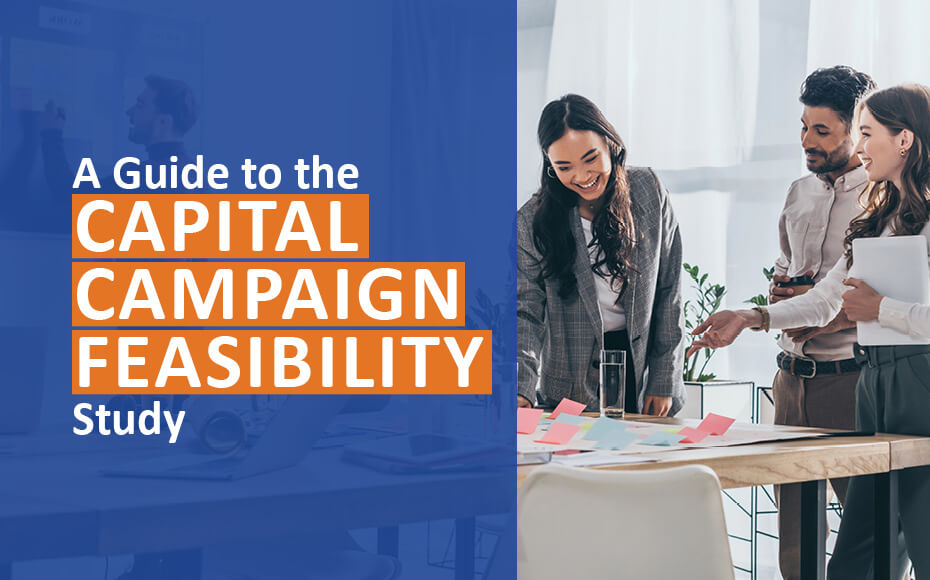By Patrick Schmitt
Capital campaigns drive incredible impact for nonprofit organizations, funding important new investments that grow their capacity to pursue their missions and serve more constituents.
These campaigns also create many opportunities to deepen relationships and drive impact beyond soliciting one-time campaign gifts and pledges.
For example, many organizations use their capital campaign to help kickstart or expand their planned giving programs. Taking this opportunity allows them to invest in a high-ROI form of giving that can sustain their work through periods of economic turbulence. This is particularly true for the “comprehensive campaigns” often conducted by large institutions, although the right strategies and a flexible approach make it a feasible route for any campaign.
Let’s say you’re planning your next capital campaign—what are the fundamental steps you should take to make planned giving a successful part of your plan?
Why does planned giving complement capital campaigns?
First, let’s provide some context. Nonprofits commonly fold additional sub-goals or fundraising initiatives—such as planned giving—into their overarching campaign plans for two key reasons:
- Capital campaigns are already a time of heightened communication, engagement, and energy among nonprofits’ communities of stakeholders and investors.
- As big undertakings, capital campaigns typically come with their own budgets. Since forward-thinking growth is the ultimate objective of a campaign, nonprofits are more open to investing in their capabilities and programs during this time.
When looking at planned giving specifically, we can pinpoint a few major reasons why nonprofits might choose to prioritize this form of giving during campaigns:
- Planned gifts are deferred and come from a supporter’s wealth and saved assets rather than cash on hand, often resulting in larger gifts or gifts from unexpected sources.
- These gifts are extremely flexible, ranging in complexity from straightforward bequests to trusts and annuities that may incorporate cash and non-cash assets.
- They also bring unique tax benefits for supporters, which may be appealing motivators for your nonprofit’s major investors and stakeholders.
- The legacy-building aspect of planned giving is uniquely meaningful for supporters at all giving levels and taps into a different set of giving motivations than gifts of cash.
All of these reasons make planned gifts more appealing and accessible than many nonprofits initially assume. A robust planned giving program creates predictable, sustainable (often unrestricted) revenue that allows organizations to more effectively plan and grow over time—the perfect complement to a major campaign designed to fuel long-term growth.
Of course, fundraisers may have concerns that expanding a campaign’s priorities might detract from its core goal. The same cannibalization concerns arise around annual giving during multi-year campaigns. However, it’s important to remember that these forms of giving entail different impacts and motivations—when communicated clearly, they can complement rather than compete.
If cannibalization is a major concern but you still want to prioritize planned giving, you might adjust your approach to count planned gifts toward the campaign’s overarching goal. We’ll take a look at this strategy next.
How to incorporate planned giving into your campaign plan
1. Determine the best approach for your campaign.
There’s no one-size-fits-all way to integrate planned giving into a capital campaign—your approach should be flexibly tailored to your needs. Depending on how much you seek to raise, the scope of your fundraising goals, and the projected duration of the campaign, there are a few general routes you might take.
For example, planned giving is most easily incorporated when capital campaigns also include endowment growth in their goals and actively ask major prospects for a portion of their gifts to go to an endowment.
These portions can be given through planned gifts, a tax-savvy choice that drives the same impact without immediately increasing their contribution. This approach allows nonprofits to include committed planned gifts within their overarching capital campaign goal.
Or, if you’re conducting a much shorter or focused campaign that doesn’t include endowment, you can promote bequest giving and initiate conversations more broadly in addition to soliciting campaign gifts. However, the same giving motivations are at play—increased impact for investors on a longer timeframe without increasing today’s gift. Frame these bequests as “donation boosts” that will drastically extend the long-term impact of their support.
Consider your existing planned giving efforts, too. Do you have a planned giving program already? Do you know who these investors are and what characteristics they share? Use these insights to set a planned giving subgoal for your campaign, like growing your total committed planned gifts by X% or securing X more planned gifts.
2. Find viable intersections for planned giving in your fundraising plan.
Next, identify a core group of stakeholders likely to be interested in planned giving so you can build your strategy for reaching them and expanding outward.
Examine your campaign’s gift range chart, depth chart, and prospect research materials—anything you’ve used to identify and prioritize prospects. Compare them with your planned giving insights (drawn from your existing planned giving efforts and fresh research on planned giving trends and personas).
Ask yourself: Where do they intersect? Are there individuals on your campaign depth chart whose characteristics align with target planned gift supporters?
Keep in mind that planned giving is highly accessible, more accessible than many organizations might assume. Mid-level investors often make excellent prospects and might love the opportunity to deepen their impact on your organization without the extra upfront cost. Don’t limit your research to only the top tiers of your gift range chart.
As you work through this process, make a list of prospects. Screen your database for planned giving prospects separately from your previous campaign research and double-check if they warrant inclusion on your depth chart to help you reach your planned giving goal.
3. Make an outreach plan.
Lay out a plan for introducing the planned giving aspect of your capital campaign. You might approach this in one of several ways depending on your audience:
- For major supporters and stakeholders, discuss planned giving one-on-one. Frame growing your program as a key priority during this period of energy and investment.
- Send targeted messaging about your program and the benefits of planned giving to your mid-range investors before initiating campaign conversations so they know it’s a priority.
- Include mentions of planned giving in broad messaging about your capital campaign, its goals, and projected outcomes after the public kick-off to maximize visibility.
FreeWill’s planned giving program guide highly recommends two key strategies to support your program regardless of your audience segment: providing social proof and establishing a legacy giving society.
Including social proof in your appeals and solicitation materials through testimonials from existing planned gift supporters goes a long way toward persuading newcomers. Take it to the next level by uniting these supporters in a dedicated legacy giving community with perks like unique engagement opportunities and communications. Together, these strategies empower you to foster trust in and convey the value of this form of giving.
4. Develop outreach materials to ensure a smooth experience.
Speaking of solicitation materials, don’t forget to create additional materials needed to support your revamped planned giving program.
For instance, add planned giving to your website’s Ways to Give page or create a standalone planned giving microsite to reinforce it as a priority for your nonprofit. Use this as the central place to house educational information about planned gifts, their benefits for you and supporters, and more. During outreach, direct your audience to this page or site to learn more if interested.
It’s also a good idea to offer supporters a tool to easily create bequests online. As part of your public phase promotional strategy, recommend free platforms that allow users to generate legal wills that include bequest language generated for their donation specifics.
If higher-impact investors express interest in more complex planned gifts or non-cash gifts during conversations, have a plan for notifying the relevant development team member in charge of those programs. Keep in mind that your nonprofit should never offer explicit financial, tax, or estate planning advice—provide suggestions and your perspective, but direct supporters to professionals to get official answers and recommendations.
5. Explore ways to energize your planned giving initiative.
As your strategy comes together, consider options for building energy and excitement into your planned giving push. Here are two approaches that work well for many nonprofits:
- Recruit a board member advocate. Is a board member particularly passionate about planned giving and estate planning? Ask them to lead the charge in securing new planned gifts from other board members and among supporters. They can serve as the face for your planned giving push by educating your audience and discussing the benefits and meaningfulness of these gifts through events, webinars, and more.
- Create a unique fundraising challenge. Work with a major funder, corporate sponsor, or investor (who’s created a planned gift themselves and understands their value) to create a special matching challenge. Hammer out a challenge structure that will drive engagement. For example, your partner might increase their direct donation to the campaign by X% or $X for every new bequest secured within a specific timeframe. This tactic could supercharge your results, start conversations that will continue post-campaign, and increase engagement for your broad base in the public phase.
Consider other strategies you’ve used in past campaigns or have seen peer organizations use in their capital campaigns. Think about your mission, timeframe, and goals to land on the options that are best suited for your campaign. Be sure to give yourself enough time to determine and promote these special challenges and relationships, too.
_________________________________________________________________________________________________
Capital campaigns are a huge opportunity for growth in more ways than one. With the influx of energy and investment they bring, it’s always worth exploring your options for strengthening your nonprofit’s practices and programs—especially planned giving.
With thorough planning and a flexible approach tailored to your organization’s needs and community, you can make your campaign your own, maximize impact, and build a thriving planned giving program that will sustain your work long after your campaign’s funded project comes to fruition.






